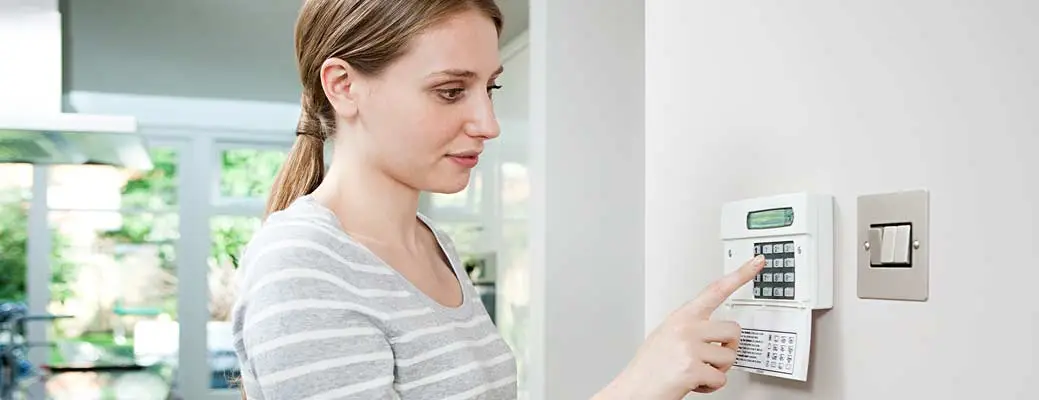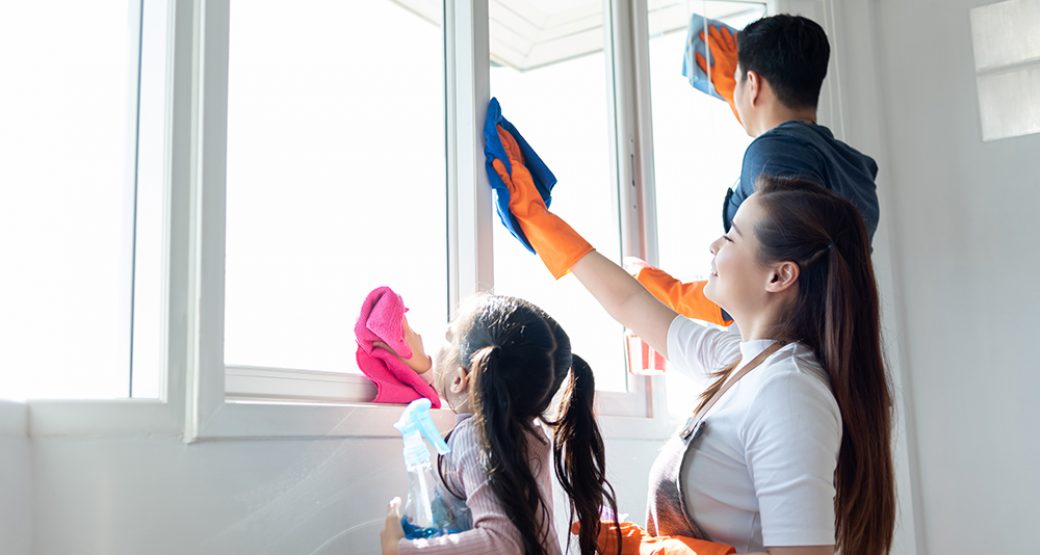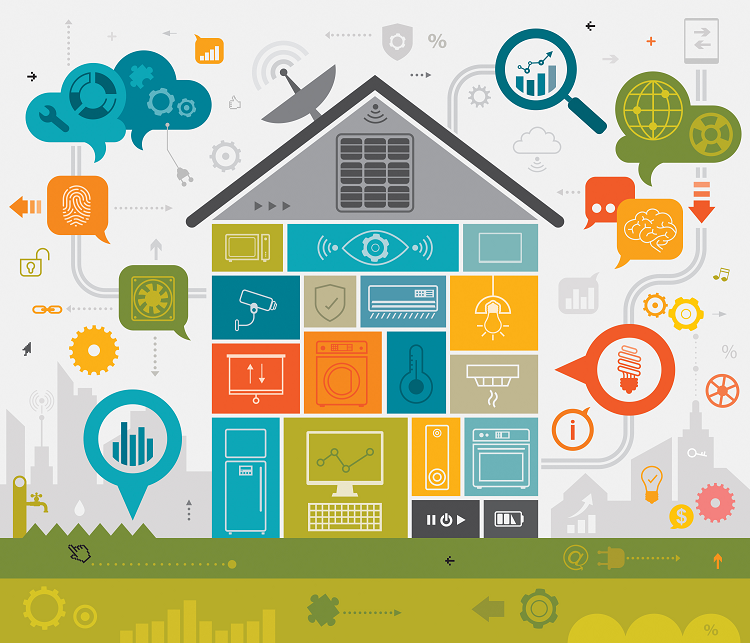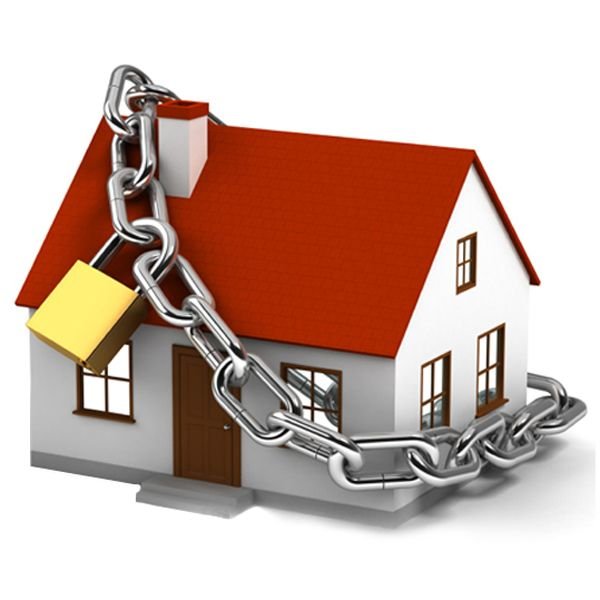To keep your home secure, invest in quality locks and a reliable alarm system. Regularly check windows and doors for vulnerabilities.
Home security is a top priority for homeowners seeking peace of mind. Ensuring the safety of your family and possessions is crucial in today’s world where break-ins and property crimes are prevalent. Smart security measures, such as motion sensors, outdoor lighting, and surveillance cameras, act as strong deterrents to potential intruders.
Equally important is adopting good practices like not leaving spare keys outside and being mindful of what you share on social media. Homeowners who stay informed about neighborhood crime trends and work together with local community watch programs often enjoy enhanced security. Remember, a secure home is the result of vigilant planning, quality security equipment, and ongoing awareness.
The Importance Of Home Security
Home security is a crucial aspect of daily life that ensures the safety of our families and the protection of our possessions. The peace of mind that comes with a secure home is invaluable. A well-protected home deters intruders and prevents break-ins, keeping danger at bay. Understanding the importance of home security is the first step to creating a safe haven for your loved ones and valuables.
Protecting Your Loved Ones
The safety of family members is a top priority for everyone. A secure home acts as a shield against potential threats, whether from human intruders or environmental hazards. Here are key measures to keep your loved ones safe:
- Install a reliable alarm system that alerts authorities in case of an emergency.
- Use smart locks on doors and windows for controlled access.
- Equip your home with fire detectors and carbon monoxide sensors to protect against silent, but deadly threats.
Additionally, fostering a culture of safety within the home is crucial. Teach children about the importance of security and ensure they know what to do in various scenarios. Regular family drills can help everyone stay prepared. Consider the following table for a quick safety checklist:
| Item | Description | Check Frequency |
|---|---|---|
| Emergency Contacts | Updated list of contacts for immediate help | Monthly |
| Alarm Batteries | Ensure alarms have working batteries | Bi-annually |
| Drills | Conduct safety drills with all family members | Quarterly |
Safeguarding Your Valuables
Your home houses not just memories but also valuable items that may be targets for theft. To ensure these items remain secure, consider these tips:
- Invest in a sturdy safe for important documents and jewelry.
- Install security cameras that monitor and record all areas where valuables are kept.
- Maintain an inventory of your valuables, including serial numbers and photographs.
It’s essential to stay proactive in safeguarding possessions. Use technology to your advantage with smart home systems that notify you of unusual activity. Be discreet about your valuables; avoid displaying them where they can be easily seen from outside. Keep a record of the following details for each valuable item:
| Item | Description | Location | Value |
|---|---|---|---|
| Electronics | Brand, model, serial number | Living room | $500 |
| Jewelry | Type, material, unique features | Safe | $2000 |
| Artwork | Artist, title, year | Study | $3000 |
Assessing Your Home’s Vulnerabilities
Keeping your home secure is a top priority for peace of mind. To do this, you must first assess your home’s vulnerabilities. This means taking a close look at your home to find out where it might be easy for intruders to get in. A secure home deters intruders and keeps your loved ones safe. Let’s dive into the steps to identify how your home might be at risk.
Identifying Entry Points
Every home has places that might let intruders in. These are called entry points. To keep your home safe, you need to know where these are. Look at your doors, windows, and any other places someone could enter from outside. Don’t forget to check places that are not easy to see, like basement windows or a back door. Here’s what you should look for:
- Front and back doors: Are they strong? Do they have good locks?
- Windows: Can they lock well? Are they easy to break?
- Garage doors: Is there a way to get into your home through the garage?
- Pet doors: Could a person fit through the pet door?
Also, think about how you could make these entry points safer. Use a table to keep track of what you find and how you can fix it.
| Entry Point | Vulnerability | Improvement |
|---|---|---|
| Front Door | Old lock | Install a new deadbolt |
| Windows | Loose locks | Add window sensors |
Understanding Potential Risks
Once you know where your home is weak, you need to understand the risks. This means thinking about what could happen if an intruder found these weak spots. Ask yourself these questions:
- What could an intruder take from my home?
- What damage could they do?
- How would this affect my family?
By knowing the risks, you can make a plan to stop them. This might mean getting better locks, installing an alarm, or putting up cameras. It’s important to fix the weak spots in your home to keep the bad guys out. You can also talk to your neighbors and watch out for each other. Remember, a safe home is a happy home.
Effective Security Measures
Keeping your home secure is a top priority for peace of mind. The right security measures can deter burglars and help protect your family and possessions. From tech upgrades to simple enhancements, let’s explore how to fortify your home.
Installing Alarm Systems
An alarm system acts as a vigilant guardian for your home. It’s a powerful deterrent for intruders and a critical component of home security. Here’s why you should consider one:
- 24/7 Monitoring: Professional services watch over your home around the clock.
- Instant Alerts: Get notified on your phone if there’s any suspicious activity.
- Peace of Mind: Knowing your home is protected, even when you’re away.
Consider these points when choosing an alarm system:
| Feature | Benefit |
|---|---|
| Wireless Technology | Easier installation and fewer vulnerabilities. |
| Backup Power | Keeps your system running during power outages. |
| Smart Home Integration | Control your system with other smart devices. |
Implementing Smart Locks
Smart locks provide convenience and enhanced security. They allow you to control access to your home with features like:
- Remote Access: Lock and unlock doors from anywhere.
- Custom Codes: Create unique codes for family and guests.
- Access Logs: Track who comes and goes.
Smart locks can integrate with other devices for a seamless security system. You can set up scenarios such as lights turning on when the door unlocks. This creates the illusion that someone is always home.
Enhancing Outdoor Lighting
Good lighting is a simple yet effective way to keep intruders at bay. Bright, well-placed lights can make your home a less appealing target. Here’s how to light up your home’s exterior:
- Motion Sensors: Lights turn on when they detect movement, startling potential intruders.
- Timers: Program lights to switch on and off at set times.
- Solar-Powered: Eco-friendly options that save on energy costs.
When setting up outdoor lights, focus on areas like entrances, walkways, and dark corners. A well-lit property is a strong signal to burglars that your home is protected.

Credit: www.fbfs.com
Securing Windows And Doors
Keeping your home secure is crucial for peace of mind. A key step is to focus on securing windows and doors. These entry points are often targeted by intruders. Strong locks and smart technology can help safeguard these vulnerable areas. Let’s explore how to enhance the security of your windows and doors effectively.
Choosing Quality Locks
The right locks on your doors and windows are your first line of defense. Opt for high-quality, durable locks that resist tampering and forced entry. Consider these points:
- Deadbolts for exterior doors should be grade 1 or 2, as these offer the best protection.
- Window locks should fit tightly and not allow the window to be pried open from the outside.
- For sliding doors, use security bars to prevent them from being forced open.
Look for locks with features like anti-snap, anti-bump, and anti-pick technology. These features add extra layers of security. Here’s a simple table to help you choose:
| Lock Type | Features | Best Use |
|---|---|---|
| Deadbolt | Grade 1, anti-pick | Front and back doors |
| Window Lock | Keyed, anti-lift | Ground floor windows |
| Security Bar | Adjustable, sturdy | Sliding doors |
Consider a professional installation to ensure your locks are fitted correctly. A secure fit is essential for effective protection.
Utilizing Window Sensors
Window sensors add a tech-savvy layer of security to your home. They alert you when a window is opened or broken. Here’s how to make the best use of window sensors:
- Place sensors on all windows, especially those hidden from view or on the ground floor.
- Use glass break sensors to detect the sound of breaking glass.
- Connect sensors to a home security system for instant alerts.
These sensors often come in two parts: one attaches to the window, and the other to the frame. When the connection breaks, an alarm sounds. A good setup includes:
| Sensor Type | Placement | Connectivity |
|---|---|---|
| Open/Close Sensor | Window corner | Wi-Fi/Bluetooth |
| Glass Break Sensor | Near glass areas | Wi-Fi/Security System |
| Vibration Sensor | Window frame | Wi-Fi/Security System |
For smart homes, integrate sensors with your mobile devices. You’ll receive real-time updates, no matter where you are. This can be crucial for prompt response to any security breach.
Utilizing Surveillance Technology
Keeping your home secure is a priority for many homeowners. One effective strategy is utilizing surveillance technology. This approach not only deters potential intruders but also provides real-time monitoring and evidence collection. Embracing modern surveillance tech can transform your home into a safer haven.
Installing Security Cameras
Security cameras serve as the eyes of your home, offering constant vigilance. When installing security cameras, consider these points:
- Choose a high-definition camera to ensure clear images.
- Look for cameras with night vision to capture footage in low light.
- Opt for cameras that offer motion detection to alert you to activity.
- Ensure cameras are weather-resistant if they will be outdoors.
A well-planned camera setup includes key areas:
| Location | Benefits |
|---|---|
| Front Door | Monitors visitors and deliveries |
| Back Door | Captures backyard activity |
| Garage | Keeps an eye on vehicles and storage |
| Windows | Secures vulnerable entry points |
Utilizing Video Doorbells
Video doorbells are a game-changer in home security. They blend convenience with protection, letting you see and speak with visitors from anywhere. Here’s why they’re essential:
- They provide live video streaming and recording.
- They offer two-way audio, allowing communication without opening the door.
- They can send alerts to your phone when someone approaches.
When choosing a video doorbell, consider these features:
| Feature | Advantage |
|---|---|
| HD Video | Clear visitor images |
| Wi-Fi Connectivity | Remote access and alerts |
| Cloud Storage | Access recorded footage anytime |
| Integration | Works with smart home systems |

Credit: protechsecurity.com
Creating A Neighborhood Watch
Want a safer home? Start with your community. A Neighborhood Watch can keep your area secure. It’s all about folks looking out for each other. Let’s dive into how this powerful tool works.
Building Community Relationships
Trust among neighbors is the core of a successful Neighborhood Watch. It starts with getting to know each other. Host a block party, plan a clean-up day, or simply say hello. These actions build bonds. Strong bonds make it easier to spot anything unusual in your neighborhood.
- Exchange contact info with neighbors
- Set regular meetings to discuss concerns
- Invite local police to share insights
Create a contact list that everyone can access. This ensures quick communication if something’s wrong. A shared list keeps everyone in the loop. Use a simple table like this:
| Name | Address | Phone | |
|---|---|---|---|
| John Doe | 123 Maple St | 555-1234 | johndoe@email.com |
Remember, regular meetings are key. They keep the community engaged. Use these gatherings to train members on safety practices. Role-playing scenarios can prepare your watch group for real incidents.
Sharing Security Tips
Knowledge is power, especially when it comes to safety. Sharing security tips can greatly improve your neighborhood’s vigilance. Start a monthly newsletter to distribute tips. Include topics like:
- Proper lighting around the home
- Using timers on electronics
- Installing security systems
These tips can be simple yet effective:
- Lock doors and windows before leaving the house.
- Trim bushes to remove potential hiding spots for intruders.
- Organize a security audit for homes in your area.
Consider creating a resource hub online for neighbors to access. This can be a shared drive or a private group on social media. Here, post updates on local crime, upcoming meetings, and new safety protocols. Encourage neighbors to contribute to this hub. It’s a great way to keep the tips fresh and relevant.
Regular training sessions can also be beneficial. Bring in security experts to teach effective home defense techniques. Safety drills can prepare neighbors for different scenarios. Practice makes perfect, and in this case, it can also make your neighborhood safer.
Developing A Home Security Plan
Keeping your home secure is more than just locking doors. It’s about creating a robust plan that keeps everyone safe. A sound home security plan involves clear steps and routines. It ensures every family member knows what to do in an emergency. Let’s dive into how you can develop a solid security strategy for your home.
Establishing Emergency Protocols
A well-defined emergency protocol is the backbone of home security. Start with these key steps:
- Identify risks: Consider all potential emergencies, like break-ins or fires.
- Safe exits: Ensure everyone knows the fastest escape routes.
- Gather points: Designate a safe spot outside where everyone will meet.
Next, detail each step in your protocol:
| Emergency | Action | Point Person |
|---|---|---|
| Fire | Use nearest exit, avoid elevators, meet at the tree in the front yard. | Parent #1 |
| Break-in | Lock bedroom door, call 911, use escape ladder if safe. | Parent #2 |
Create a kit with essentials like a flashlight, batteries, and a first-aid kit. Practice drills quarterly to keep everyone sharp.
Training Family Members
Every family member, including kids, should understand their role. Use simple language and clear instructions:
- Roles: Assign tasks like calling for help or grabbing the emergency kit.
- Communication: Teach how to convey information calmly and clearly.
- Practice: Run through scenarios to build confidence and memory.
Turn training into a game for younger members to boost engagement. Use a reward system for completed drills. Keep instructions visible, like on the fridge, and review them often. Empower everyone with knowledge, and your home will be a fortress of safety.
Regular Maintenance And Upkeep
Keep Your Home Secure with Regular Maintenance and Upkeep. A safe home brings peace of mind. It’s not just about installing security systems; it’s about keeping them in tip-top shape. Regular checks ensure everything works as it should. Let’s break down the steps to maintain your home’s safety barrier.
Testing Security Systems
Security systems are your first line of defense against intruders. Like any other system, they need regular checks. Here’s how to keep them alert:
- Check alarms monthly. Test smoke detectors, carbon monoxide detectors, and burglar alarms. Replace batteries yearly, even if they seem fine.
- Inspect cameras. Ensure lenses are clean and the view is unobstructed.
- Review sensors. Open and close doors and windows to test if sensors respond correctly.
Keep a log of your tests. Note any issues and fix them promptly. A simple table can help track maintenance:
| Date | System | Check Completed | Notes |
|---|---|---|---|
| April 1, 2023 | Smoke Detectors | Yes | Batteries replaced |
| April 1, 2023 | Security Cameras | Yes | Lens cleaned, view adjusted |
Updating Security Measures
Stay ahead of potential threats with updated security measures. Here’s what to focus on:
- Upgrade locks. Old locks might be easy to pick. Choose smart locks for added security.
- Update software. Keep your security system’s software current. Software updates often include security patches.
- Enhance lighting. Brighten up entry points to deter unwanted visitors.
Consider these updates as part of your home’s security overhaul:
| Area | Current Measure | Recommended Update |
|---|---|---|
| Main Door | Traditional Lock | Smart Lock with Code |
| Software | Version 1.2 | Version 2.1 with Encryption |
| Outdoor Lighting | Basic Porch Light | Motion-Sensor LED Lights |

Credit: www.pccybersecurity.com
Frequently Asked Questions
What Is The Best Way To Keep A Home Secure?
The best way to keep a home secure involves installing a robust alarm system, using strong locks, adding motion-sensor lighting, setting up surveillance cameras, and ensuring regular security system updates and maintenance.
How Do I Protect My Home From Intruders?
Secure your home against intruders by installing strong locks and a security system. Use motion-sensor lights outdoors. Keep windows and doors locked. Join a neighborhood watch program. Regularly check that your security measures are working.
What Houses Do Burglars Avoid?
Burglars typically avoid houses with visible security cameras, alarm systems, and motion sensor lighting. Dogs or signs of pets can also deter them. Busy, well-lit neighborhoods are less attractive to thieves due to higher chances of being spotted.
How To Stop Burglars From Targeting Your Home?
Secure your home with robust locks and an alarm system. Install motion-sensor lighting and surveillance cameras. Keep valuables out of sight and maintain a well-lit, visible property. Join a neighborhood watch program and ensure your home appears occupied when you’re away.
Conclusion
Securing your home is not just a choice, it’s a necessity. Small steps can lead to big peace of mind. Remember, the safety of your loved ones and possessions is paramount. Don’t wait for a security breach to happen. Take action now, and enjoy the comfort of a secure home.

